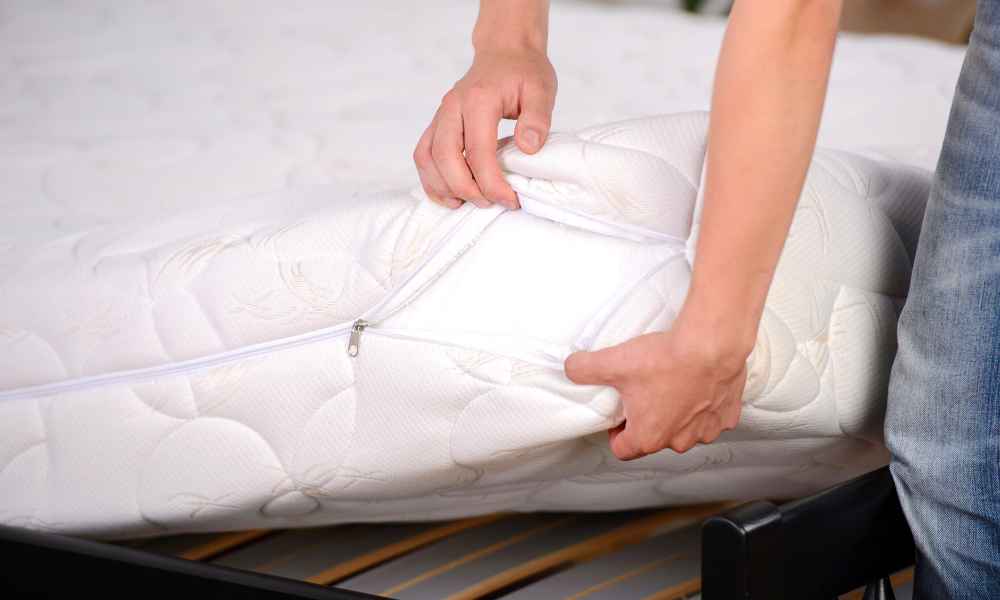Are you tired of your anti-fatigue kitchen mat looking dirty and worn out? Cleaning your anti-fatigue kitchen mat is essential not only for maintaining its appearance but also for ensuring its longevity. A clean kitchen mat not only provides A comfortable surface to stand on while cooking, But also contributes to a healthier And more hygienic environment in the kitchen. In this article, We will provide you with step by step instructions on how to effectively clean your anti-fatigue kitchen mat, So it looks as good as new.
Whether your mat is made Of rubber, foam, or gel, These cleaning methods will help remove dirt, stains, And odors while preserving its quality and functionality.
How to Clean Your Kitchen Anti-Fatigue Mat?
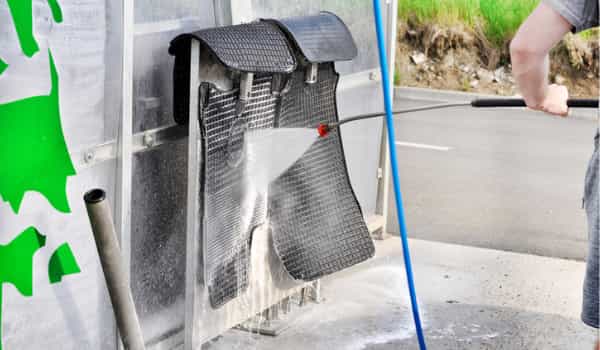
Cleaning your kitchen anti-fatigue mat is a straightforward process that helps maintain its hygiene and longevity. Start by removing loose debris and dirt from the mat’s surface by sweeping or shaking it off. Next, Use a mild soap or detergent mixed with warm water to create A cleaning solution.
Apply the solution to the mat using a soft brush or cloth, gently scrubbing the surface to remove any stains or spills. Rinse the mat thoroughly with clean water to remove any soap residue, And then allow it to air dry completely. Avoid using harsh chemicals or abrasive scrubbers that can damage the mat’s material.
Regular cleaning of your kitchen anti-fatigue mat will keep it clean, fresh, and ready to provide comfort and support during prolonged standing periods in the kitchen.
Cleaning Tips For Your Anti-Fatigue Floor Mats
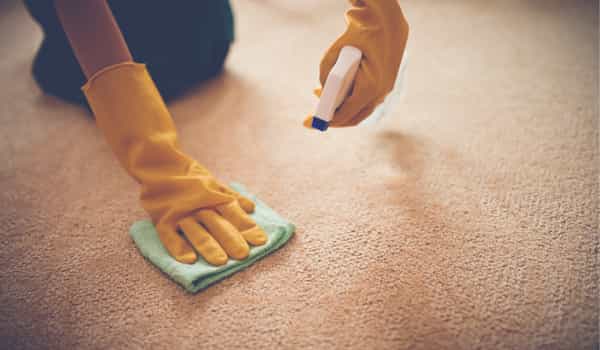
1. Vacuum, Sweep And Dry-Mop Regularly
To prevent the buildup of dirt, dust, and debris on your anti-fatigue floor mats, it’s important to vacuum, sweep, or dry-mop them regularly. This helps remove loose particles that can accumulate over time.
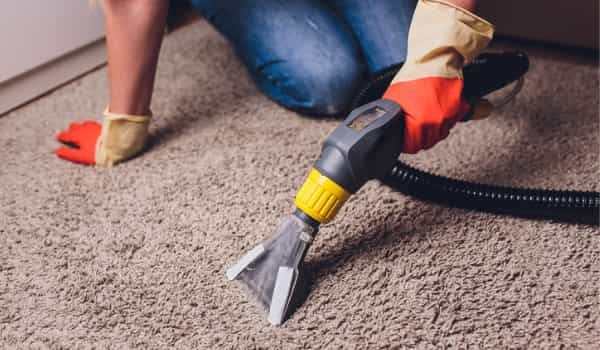
2. Wet-Mop For A Thorough Cleanup
Use A damp mop or cloth with A mild soap or detergent solution for more thorough cleaning. Gently scrub the surface of the mat to remove any stains or spills. Avoid using excessive water to prevent soaking the mat and ensure it dries quickly.
3. Dry The Mat Completely
After wet-mopping or cleaning, make sure to dry the anti-fatigue mat completely. Excess moisture can lead to mold or mildew growth and compromise the mat’s effectiveness. Allow the mat to air dry in A well-ventilated area Or use A fan to speed up the drying process.
4. Clean The Surrounding Area
While cleaning the anti-fatigue mat, don’t forget to clean the surrounding area as well. Remove any dirt or debris from the floor to prevent it from transferring onto the mat again. This will help maintain A clean And hygienic environment.
5. Avoid Cleaning Mistakes
When cleaning your anti-fatigue mats, it’s important to avoid certain cleaning mistakes. Avoid using harsh chemicals, bleach, or abrasive scrubbers as they can damage the mat’s surface. Additionally, do not machine wash or tumble dry the carpets unless specifically instructed by the manufacturer.
Assess the type of anti-fatigue kitchen mat

Different materials used in anti-fatigue mats (gel, foam, rubber, etc.)
Anti-fatigue mats can be made from various materials such as gel, foam, rubber, Or a combination of these. Each material offers different benefits and characteristics.
Gel mats are known for their excellent cushioning properties and support. Foam mats are lightweight and provide comfort. Rubber carpets are durable and offer slip-resistant properties.
By identifying the materials used in the mat, you can determine its specific features and suitability for your needs.
Understanding the manufacturer’s cleaning recommendations
Manufacturers often provide specific cleaning recommendations for their anti-fatigue mats. It is crucial to review And follow these guidelines to ensure proper care and maintenance Of the mat.
The manufacturer’s recommendations may include instructions on the type of cleaning solutions to use, suitable cleaning methods, and any precautions to be taken. By adhering to these recommendations, you can effectively clean the mat without causing any damage or compromising its performance.
Regular maintenance and preventative measures

Shake off loose debris and dirt
Periodically, Take your anti-fatigue mat outside and give it A good shake to remove loose debris and dirt. This simple step can help prevent the buildup of particles on the mat’s surface.
Use a broom or vacuum cleaner for regular cleaning
Regularly sweep or use a vacuum cleaner with a suitable attachment to remove dust, dirt, And small debris from both the carpet and the surrounding kitchen area. This will help keep your kitchen floors clean and prevent the accumulation of dirt on the anti-fatigue mat.
Place a doormat outside the kitchen entrance to minimize dirt and moisture
To minimize the amount of dirt and moisture that gets tracked into your kitchen, consider placing a doormat outside the kitchen entrance. The doormat will help trap dirt and moisture from people’s shoes before they enter the kitchen, reducing the amount of debris that makes its way onto the floors and mats.
General cleaning guidelines for anti-fatigue mats
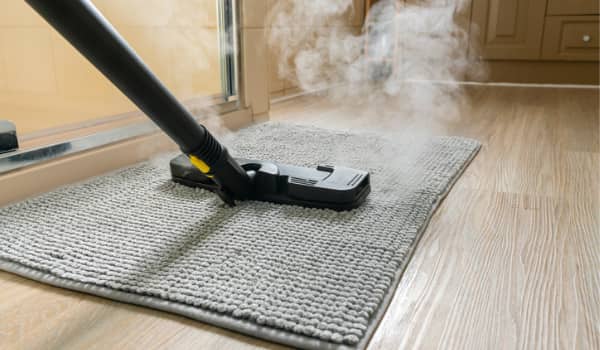
Remove spills and stains immediately
Promptly address any spills or stains on your anti-fatigue mat to prevent them from setting or becoming more difficult to clean. Blot the area with A clean cloth or paper towel to absorb as much Of the spill as possible.
Avoid rubbing the fall, As this can spread it further. Once the majority of the spill has been absorbed, follow the appropriate cleaning method for your mat material.
Use a mild detergent or cleaner suitable for the mat material
Choose a mild detergent or cleaner that is specifically recommended for the material of your anti-fatigue carpet. Different materials may require different cleaning agents to maintain their integrity. Follow the manufacturer’s instructions for diluting the detergent or cleaner in water, and apply the solution to the stained area.
Gently scrub the spot with a soft brush or cloth, and rinse thoroughly with clean water. Avoid harsh chemicals or abrasive cleaners, as they can damage the mat’s surface.
Gel anti-fatigue mats
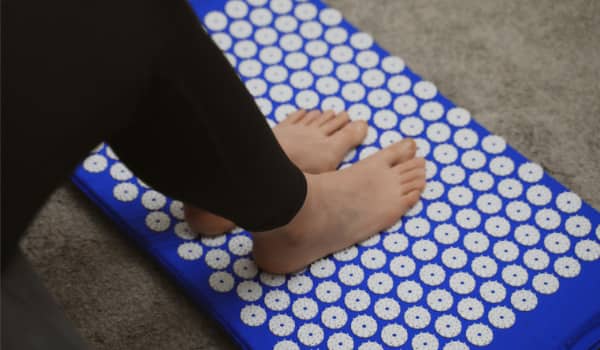
1. Wipe off spills and stains immediately
As with any anti-fatigue mat, it’s important to quickly address spills and stains on gel mats. Use a clean cloth or paper towel to blot and remove the spill as soon as possible. This will prevent the spill from seeping into the gel and potentially causing damage.
2. Use a mild soap and water solution for cleaning
Prepare a cleaning solution by mixing a mild soap or detergent with warm water. Avoid using harsh chemicals or abrasive cleaners that can degrade the gel material. The goal is to use a gentle solution that effectively cleans without causing harm.
3. Gently scrub the surface with a soft cloth or sponge
Dip a soft cloth or sponge into the soap and water solution, wring out any excess moisture, and gently scrub the surface of the gel mat. Use light pressure and small circular motions to clean the area. Avoid excessive scrubbing, as it may damage the gel material.
4. Rinse with clean water and allow to air dry
After scrubbing the mat, rinse off any soapy residue with clean water. Ensure all the soap is thoroughly rinsed off to prevent any slippery residues. Once rinsed, allow the gel carpet to air dry completely before placing it back in its designated area. Avoid using heat sources or direct sunlight to speed up the drying process, as excessive heat can affect the gel material.
Foam anti-fatigue mats
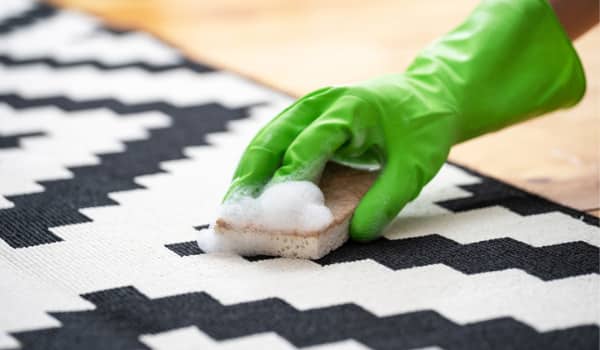
1. Remove loose dirt and debris
Start by removing loose dirt or debris from the foam mat’s surface. You can use a broom, or vacuum cleaner with a suitable attachment, or simply shake the carpet outside to remove the loose particles.
2. Mix a mild detergent with water
Mix a mild detergent or soap with warm water to prepare a cleaning solution. Avoid using harsh chemicals or abrasive cleaners that can damage the foam material. Use A small amount Of detergent to create a gentle cleaning solution.
3. Scrub the mat gently with a soft brush or sponge
Dip a soft brush or sponge into the cleaning solution and gently scrub the foam mat’s surface. Work in small circular motions, paying extra attention to any stained or soiled areas. Avoid applying excessive pressure or scrubbing vigorously, as this can damage the foam material.
4. Rinse with clean water and allow to air dry
After scrubbing, rinse the foam mat thoroughly with clean water to remove any soap residue. Ensure that all the cleaning solution is rinsed off to prevent a slippery surface. Once rinsed, Allow the foam carpet to air dry completely in A well-ventilated area. Avoid using heat sources or direct sunlight to speed up the drying process, as excessive heat can affect the foam material.
Rubber anti-fatigue mats

1. Sweep or vacuum the surface to remove loose dirt and debris
Begin by using a broom, brush, or vacuum cleaner with A suitable attachment to remove any loose dirt, dust, Or debris from the rubber mat’s surface. This will help ensure that the cleaning process is more effective.
2. Use a mild detergent or rubber cleaner
Prepare a cleaning solution by mixing a mild detergent or a rubber-specific cleaner with warm water. Avoid using harsh chemicals or abrasive cleaners that can damage the rubber material. Follow the manufacturer’s instructions for dilution ratios if using a specific rubber cleaner.
3. Scrub the mat gently with a soft brush or sponge
Dip a soft brush or sponge into the cleaning solution and gently scrub the rubber mat’s surface. Work in small sections and use gentle circular motions. Pay extra attention to any stained or soiled areas. Avoid using abrasive brushes or scrubbing vigorously to prevent damaging the rubber material.
4. Rinse with clean water and allow to air dry
After scrubbing, rinse the rubber mat thoroughly with clean water to remove any soap or cleaning solution residue. Ensure that all the cleaning solution is rinsed off to prevent any slippery residues. Once rinsed, Shake off excess water And allow the rubber carpet to air dry completely in A well-ventilated area. Avoid using heat sources or direct sunlight to speed up the drying process, as excessive heat can affect the rubber material.
Grease or oil stains
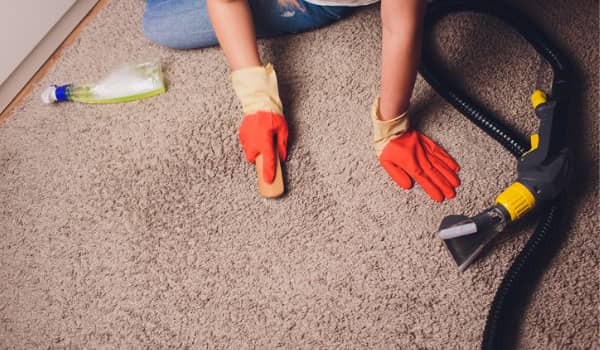
1. Absorb excess grease with a paper towel
As soon as you notice A fresh grease or oil stain, quickly blot the area with A paper towel or absorbent cloth to remove any excess grease. Press gently to absorb as much of the grease as possible without spreading it further.
2. Apply a mixture of baking soda and water
Create a paste by mixing baking soda with A small amount of water. The baking soda acts as a natural absorbent and helps break down the grease. Apply the paste to the stained area of the mat, covering it completely. Allow the paste to sit on the stain for A few minutes to work its magic.
3. Scrub gently and rinse thoroughly
Using a soft brush or sponge, gently scrub the paste into the stained area of the mat. Use small circular motions to work the baking soda mixture into the stain. Be careful not to scrub too aggressively, as it may damage the carpet. After scrubbing, rinse the carpet thoroughly with clean water to remove the baking soda residue.
Food or beverage stains
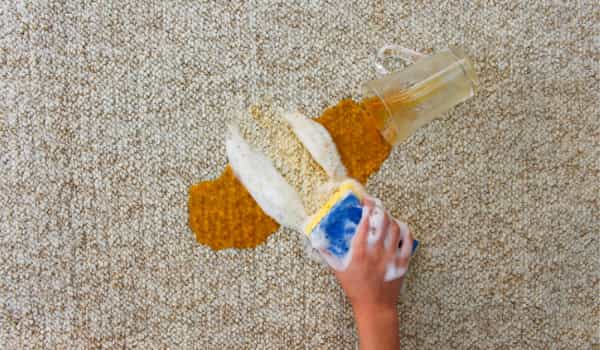
1. Blot the stain with a clean cloth or paper towel
As soon as you notice A food or beverage spill, immediately blot the area with a clean cloth or paper towel. Press gently to absorb as much of the liquid as possible without spreading the stain further.
2. Apply a mixture of mild detergent and water
Create a cleaning solution by mixing a mild detergent or dish soap with water. Make sure the detergent is suitable for the material of your anti-fatigue carpet. Dip a clean cloth or sponge into the cleaning solution and apply it to the stained area. Let the solution sit on the stain for a few minutes to help break down the residue.
3. Scrub gently and rinse with clean water
Gently scrub the stained area using a soft cloth or sponge. Use small circular motions to work the cleaning solution into the stain. Be careful not to scrub too aggressively, as it may damage the mat. After scrubbing, Rinse the area thoroughly with clean water To remove any soap residue.
Removing odors
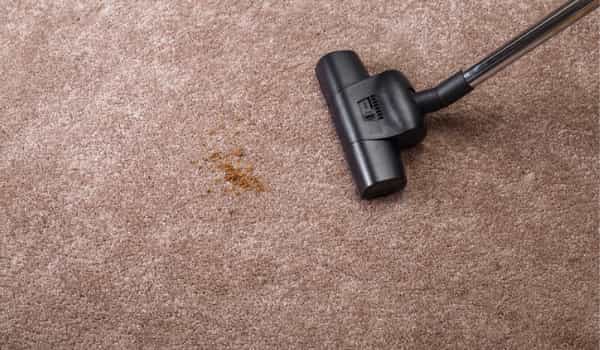
1. Sprinkle baking soda over the mat surface
Generously sprinkle baking soda over the entire surface of the mat. Baking soda is known for its odor absorbing properties And can help neutralize unwanted smells.
2. Let it sit for a few hours or overnight
Allow the baking soda to sit on the mat surface for a few hours or, ideally, overnight. This will give it enough time to absorb and neutralize the odors effectively.
3. Vacuum or sweep off the baking soda
After the designated time has passed, use a vacuum cleaner with a suitable attachment or a broom to sweep away the baking soda from the carpet surface. Make sure to thoroughly remove all the baking soda residue.
Drying and maintenance tips
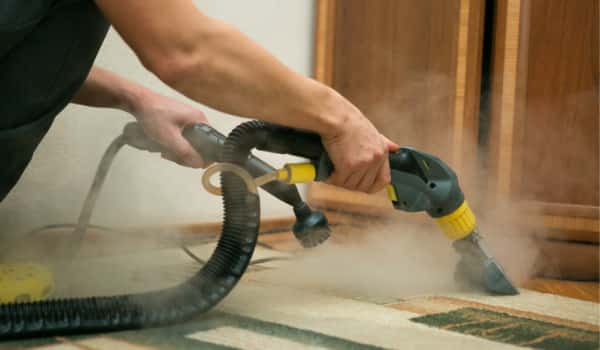
Allow the mat to air dry completely before placing it back in the kitchen
After cleaning Or if the mat gets wet, It’s important to ensure it is completely dry before using it again. Allow the carpet to air dry in A well-ventilated area. This helps prevent the growth of mold, mildew, Or unpleasant odors.
Avoid folding or storing a wet mat
Folding or storing a wet mat can lead to moisture being trapped, which can cause damage to the mat and promote the growth of mold or mildew. Always ensure the carpet is thoroughly dry before folding or storing it. If needed, You can roll the carpet for storage, But make sure it is completely dry to avoid any moisture-related issues.
Regularly inspect the mat for any signs of damage or wear
It’s important to inspect your anti-fatigue mat regularly for any signs of damage or wear. Look for tears, cracks, or areas where the carpet may be losing its cushioning or support. If you notice any damage, consider replacing the mat or contacting the manufacturer for possible repairs or warranty information. Promptly addressing any issues will help maintain the mat’s performance and prevent further damage.
Additional tips for long-term maintenance
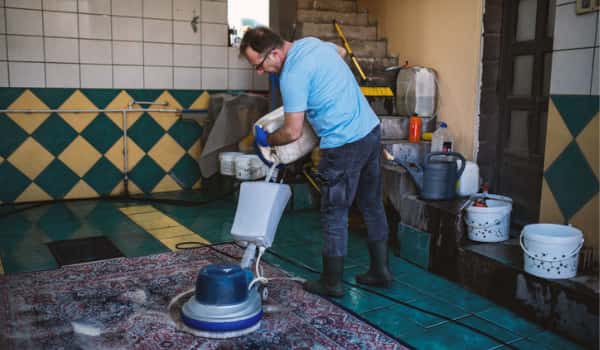
Rotate the mat occasionally to ensure even wear
To promote even wear and prevent excessive wear in certain areas, consider rotating the carpet periodically. This helps distribute the weight and pressure evenly across the mat’s surface, prolonging its lifespan and maintaining its effectiveness.
Avoid using harsh chemicals or abrasive cleaners
Harsh chemicals and abrasive cleaners can damage the material of the carpet, affecting its performance and durability. Stick to mild detergents or cleaners recommended by the manufacturer for regular cleaning. If you encounter tough stains or spills, try gentler cleaning methods or consult the manufacturer for specific recommendations.
Follow the manufacturer’s instructions for specific care guidelines
Different anti-fatigue mats may have specific care instructions provided by the manufacturer. It’s important to read And follow these instructions carefully to ensure proper maintenance. The manufacturer’s guidelines may include recommendations on cleaning solutions, temperature limits, or any specific do’s and don’ts for the carpet. Adhering to these guidelines will help maintain the mat’s performance and prolong its lifespan.
Importance of cleaning anti-fatigue kitchen mats
Regularly cleaning anti-fatigue kitchen mat is crucial for maintaining a clean, safe, and hygienic environment. It helps prevent the buildup of bacteria, mold, and unpleasant odors, reduces the risk of slips and trips by eliminating dirt and debris, preserves the mat’s performance and longevity, controls odors, and contributes to a visually appealing kitchen. By prioritizing cleaning, you ensure that your anti-fatigue carpet continues to provide the comfort, support, and safety they are designed for.
Benefits of maintaining a clean and hygienic mat
Maintaining A clean and hygienic mat offers several benefits, including promoting a healthy And safe environment, reducing the risk Of bacteria and allergens, preventing odors, improving indoor air quality. And prolonging the carpet’s lifespan, ensuring it remains effective in providing comfort, support, And a visually appealing appearance.
The Final Thought
Keeping your anti-fatigue kitchen mat clean is essential for maintaining a hygienic and comfortable workspace. By following the steps outlined in this article, You can easily remove dirt, stains, And odors from your mat. Regular cleaning not only extends the lifespan Of your carpet but also ensures that it continues to provide the necessary support And cushioning for your feet while standing for long periods. So don’t neglect this important task make a habit of cleaning your anti-fatigue kitchen mat regularly to enjoy its benefits for years to come.


